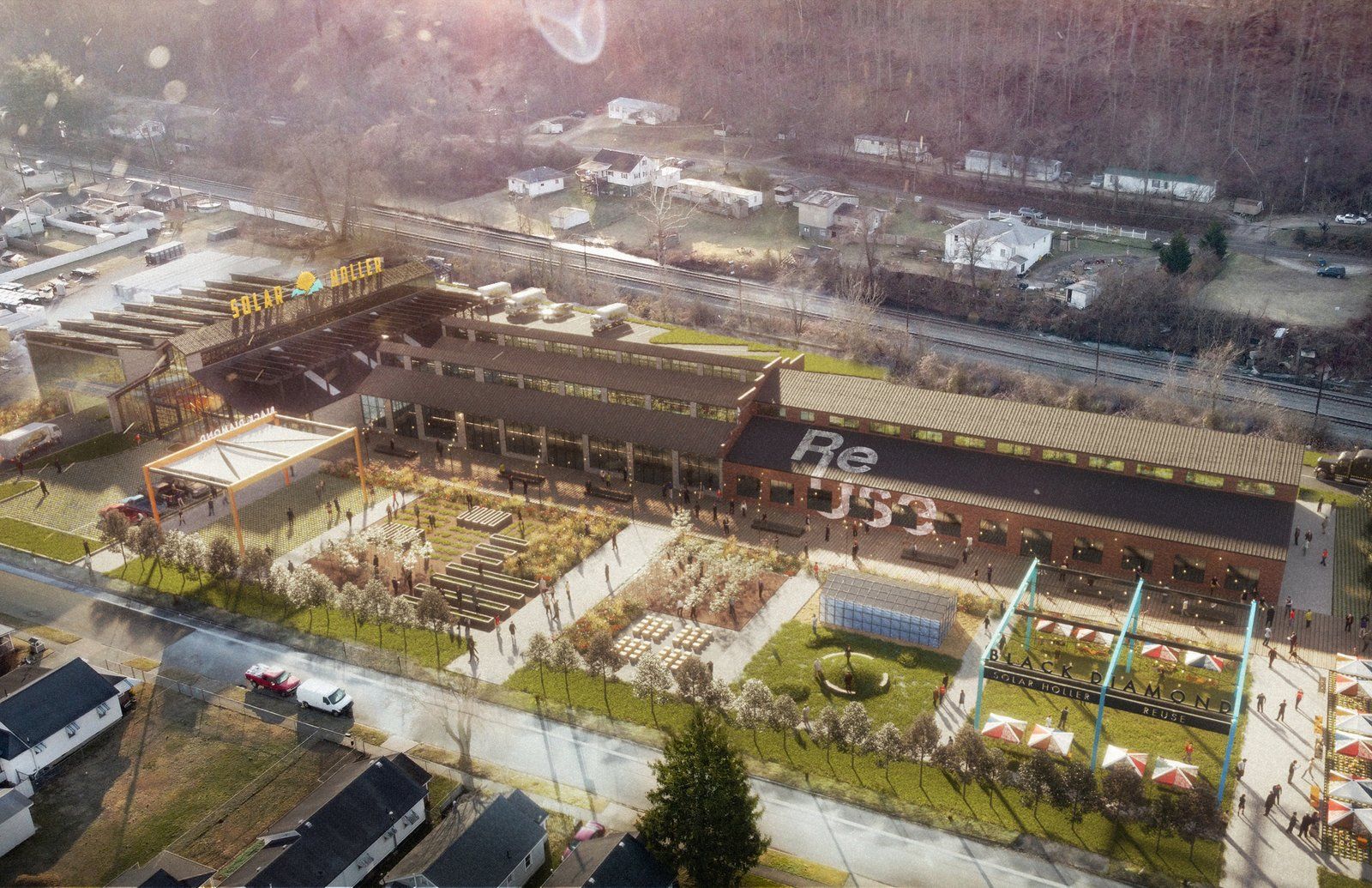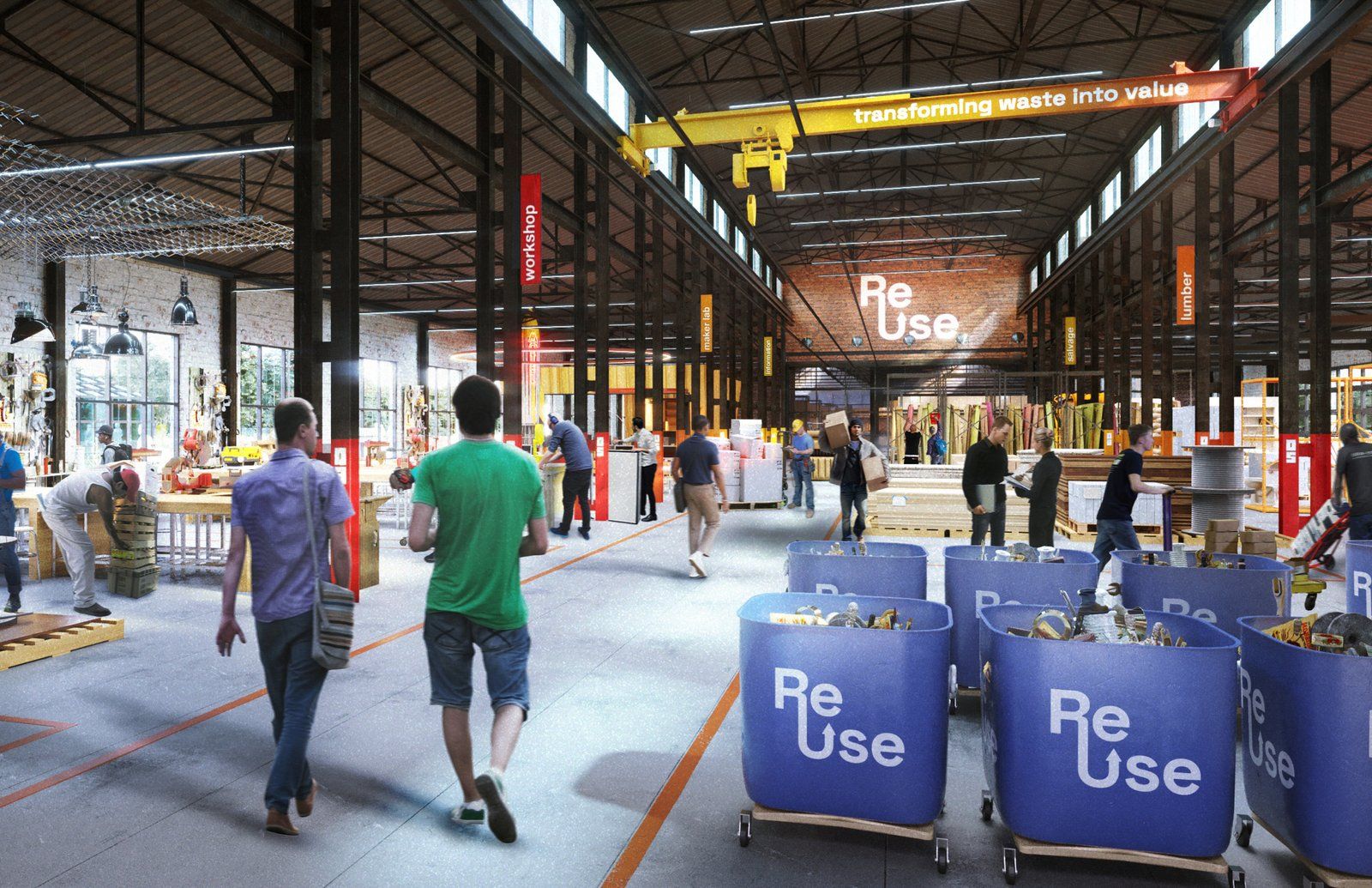
A rendering of the reimagined Solar Holler, blending renewable energy and community space with industrial heritage
The design transforms a former glider factory into a flexible, community-facing campus, extending public space, supporting Solar Holler’s green energy mission, and anchoring regional sustainability through reuse and upcycling.
In Huntington, West Virginia, WXY brought a blend of adaptive reuse and public engagement to a former WWI glider manufacturing site to create a hub for Appalachia’s green economy. Partnering with the Coalfield Development Corporation, the project transforms an aging industrial complex into a vibrant center for solar innovation, material upcycling, and local connections.
Revitalizing a long-closed and polluted site into a hub for solar energy and reuse demanded a careful balance between preserving its historic architecture and integrating modern functionality. The project required creating inviting public spaces that blur the line between indoor and outdoor experiences while accommodating Solar Holler’s headquarters. The site’s location in a low-density residential neighborhood also called for a design that fosters connection and complements the surrounding area.

A rendering of a repurposed factory interior as a bustling hub for reuse and material transformation.
The approach retains the former glider facility’s character while activating interior and exterior spaces. A redesigned front yard introduces neighborhood-focused features such as a greenhouse, growing beds, and performance areas, encouraging engagement. The main structure features a striking glass façade that floods the interior with natural light and connects seamlessly to the surrounding environment. Inside, flexible layouts incorporate historic elements like gantry cranes, blending heritage with contemporary functionality. The complex includes spaces for Solar Holler, a solar panel developer, and ReUse Corridor, a consortium dedicated to material upcycling and resource sharing. The plan resolves site logistics for large vehicles while fostering collaboration and creativity, ensuring harmony with the nearby residential community.
WXY partnered with local firm Edward Tucker Architects and site consultants, working closely with Coalfield Development to align architectural and community goals. Through workshops and design sprints, the team developed a strategy integrating green technologies and reuse programs with accessible public spaces. Every step of the process reflects a commitment to local identity and economic growth.
Set for completion in 2026, the Black Diamond site is already a beacon of Appalachia’s green transition. Its innovative design has attracted federal funding and local support, positioning it as a regional model for sustainable development.
Claire Weisz Architects LLP
d/b/a WXY architecture + urban design
212 219 1953
office@wxystudio.com
Careers ↗
New York
25 Park Place, 5th Floor
New York, NY 10007
Toronto
30 St. Patrick Street, 5th Floor
Toronto, ON M5T 3A3 Canada
Subscribe to our newsletter
Site designed by Clinton Van Arnam
Developed by Mario Giampieri